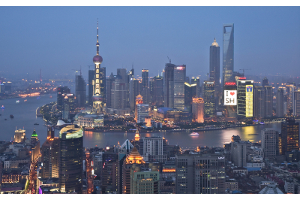Imran Hussain
Megacities are cities with populations of more than 10 million citizens and are a prime target for looking to make investments in real estate. There are currently 28 mega cities in existence, but by 2030 it is predicted that number will rise to over 40. Clearly, urban development is increasing at a rapid pace in order to keep up with the equally fast growing populations of many countries. Megacities currently contain over 12% of the world’s entire population and that figure is expected to rise dramatically in the future, raising concerns for the economy, the environment and the infrastructure of them.
This rapid development will see the construction and infrastructure industries boom with activity – by 2025 emerging markets will account for over 60% of global construction activity and money spent on infrastructure is predicted to rise from USD 9,000 billion annually to around USD 18,000 billion. Various commentators have expressed concern at the rapid growth of these megacities, because it could lead to growth being uncontrollable by local governments and lead to greater levels of social inequality, overpopulation and congestion.
So, which megacities will be seeing the most development in the near future? The most promising prospect is Shanghai, China, which has also has the building and manufacturing capability to support such growth. The central government of Shanghai is very keen to see this change, and has long supported the city becoming a centre for international trade and investment. Developments in financial transparency and the highest quality of living in the country definitely help Shanghai’s case in becoming a vital hub for international investors. Unfortunately, the region suffers from the risk of environmental disasters and it is very important to ensure that the city is structurally strong enough to handle these and that the government offers adequate relief and disaster support.
One of the fastest growing megacities currently can be found in Nigeria. Lagos contains many of Nigeria’s banks and other financial institutions and is fast becoming an attractive spot for investors. Although the region still suffers from social, economic and environmental challenges, vast improvements are being made year-on-year, which leads experts to have an optimistic vision for Lagos.
So how can governments plan now to help keep the growth of megacities contained and controlled? A vital aspect is ensuring that housing remains affordable, modes of transport are efficient and pollution levels are kept to a minimum. As long as these factors are closely monitored and developments made in accordance by the local governments of these megacities then they will continue to thrive and grow and not buckle under their own immense weight.





